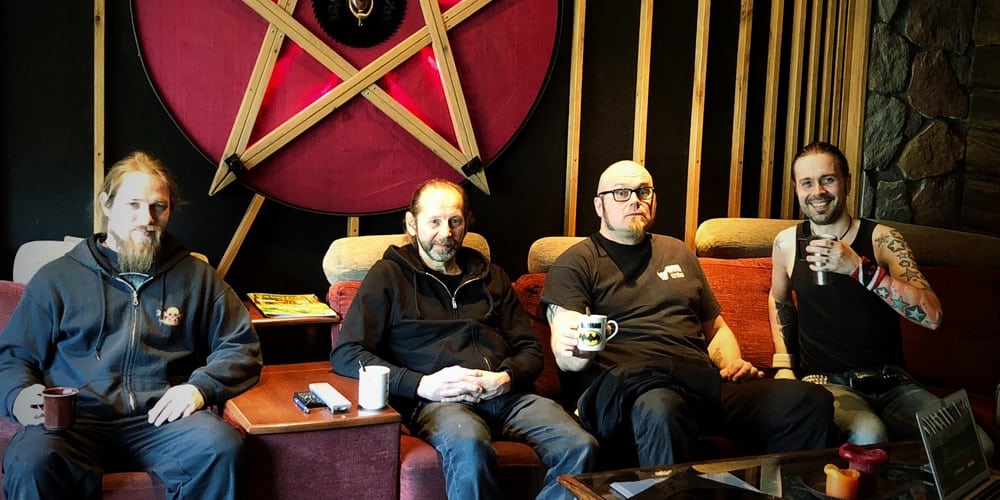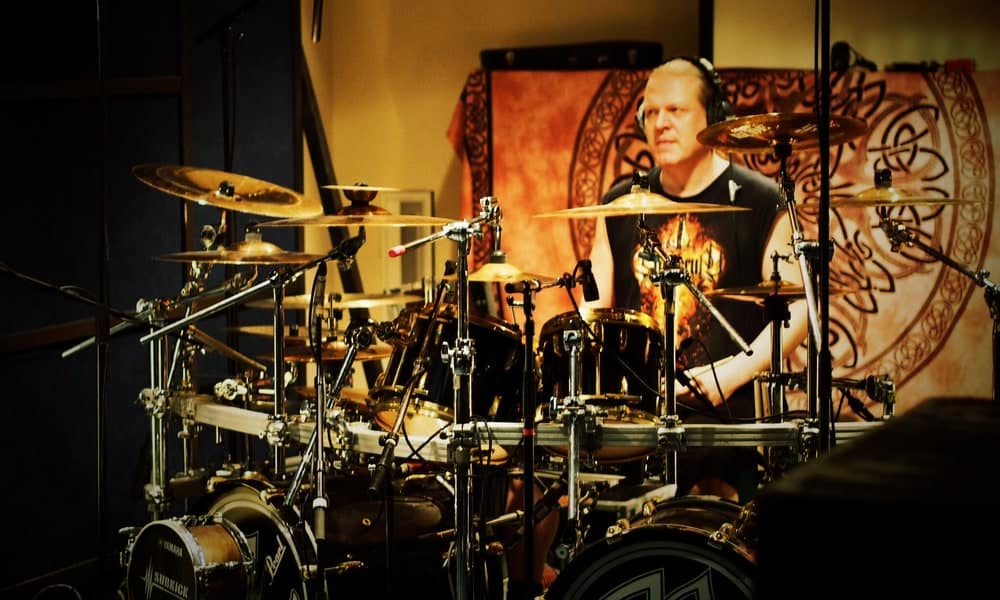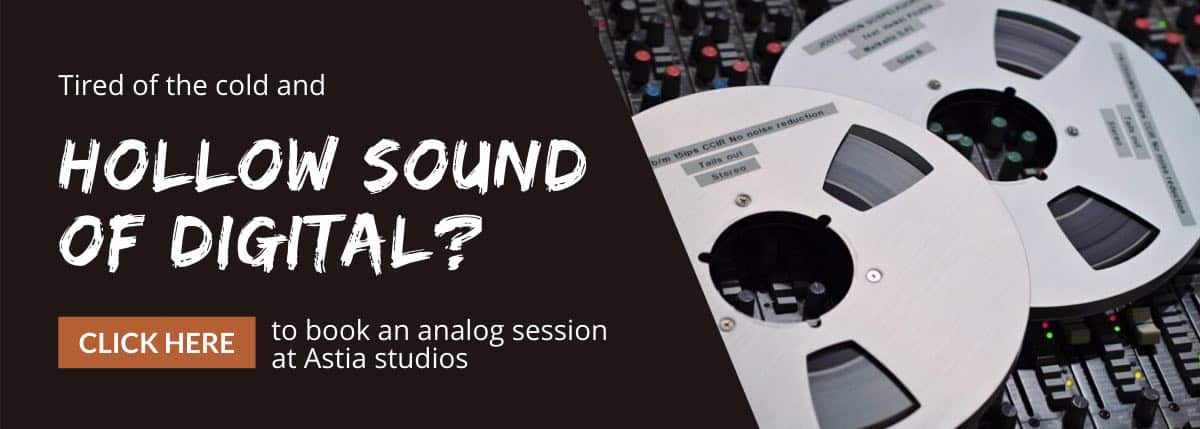To metronome or not
This time I would like to talk about the nemesis of most drummers; metronome. Many bands use it in studio and on live shows. It seems that studio engineers who are willing to record without metronome are almost extinct. What are the benefits and downsides? Should you play to metronome or not?
What do you mean by click?
When I recorded Children Of Bodom debut album Something Wild in 1996 we were not familiar with using a click track. There was no metronome on the album recorded on Alesis Adat system on 24 tracks. Alexi Laiho (guitar & vocals) and Jaska Raatikainen (drums) played the basic tracks together and when there was a long keyboard part without drums, Alexi played the part on pilot guitar. During keyboard recording, we had great difficulties to making keyboards fit those pause parts. Alexi had been so excited during drum tracking that his rhythm was far from constant making the keyboard recording almost impossible.
It took me and Janne Wirman (keyboards) a very long time not only to play the parts in correct tempo but also with the correct mood. I think it was then we understood that such parts would need a steady pulse on sessions to come. This eventually lead us using a click track without any exception.
Read more: 5 Things You Didn’t Know About Children Of Bodom’s Something Wild Album
Drummer, meet metronome
We began using metronome as often as possible and introduced it to every drummer we recorded. Most of them hated it. Once we made the transition to computer recording, tracking without metronome would make life of a sound engineer even more hard so we made every drummer use it sine exceptione. Without it there was no way to edit their crappy playing to grid and so all drummers silently agreed. Finally the parts that didn’t have drums were easy to record.
When recording I use metronome 95% of time. It’s not needed when playing with familiar musicians.
–Artem Zhibar / Colt, Session drummer
We soon learnt that if after drum recording we would listen both the drums and metronome simultaneously when tracking bass, guitar and keyboards, there would be no groove and definitely no connection between the instruments. This lead us having the metronome on only for the parts where there was no drums; in the beginning and for example in the soft part before the last big chorus. Now instruments started “locking-in” and that was a huge improvement on the groove department.
Back to roots
For some 15 years I could not listen any music outside the studio as everything sounded bad. Once I was re-introduced to vinyl records I found the joy of listening to music again. There definitely will be more about this topic on future blog posts. As I started digging albums from 60’s, 70’s, 80’s and 90’s, I noticed that the tempos were very much alive. If you’d try to use a click track, you’d be off after few bars. This would apply to nearly all genres. The more talented the drummer, the bigger the tempo difference.

When making click tracks it surprised me how much the tempos varied. The classic 80’s rock hits were definitely not played to metronome and when only listening, you’d never notice that.
–Ilari Heikkilä / drum tech for Sunrise Avenue, The 69 Eyes, The Local Band etc.
While talking with drum tech Ilari Heikkilä, he mentioned when making click tracks of 80’s rock hits for The Local Band he’d noticed the same and it would be time consuming trying to figure the exact tempo on those songs. Yet, when only listening, songs and tempo would sound perfect. That to me was an eye-opener! Is metronome really needed and what would happen if we would not use it?
I’d say metronome is an aid like “training wheels” that you should use until you know you can do it on your own and (actually sound better) without it.
–Juhana Karlsson / Faulty Messenger, ex-Amoral
I now use metronome only in the beginning of the song for two bars when song starts together with all instruments. If there is a guitar intro we’ll have two bars before the guitar starts and when drums start, metronome stops. We encourage every drummer to play without metronome as every part should have its own tempo. The two bars in the beginning close the door to the possibility of song starting too fast. This tends to happen when recording multiple drum takes of the same song without metronome.
I always used metronome before our debut album session, where we used it only to get the starting tempo. Songs are very much alive rhythmically, exactly like on all classic heavy metal albums. Ditching the click was a huge improvement.
–Tommi Tuhkala / Spell Of Torment
Ensiferum and metronome
When working on Finnish folk metal band Ensiferum album Two Paths, the band told me they always use metronome. They said there aren’t many songs even on their live-set that are metronome-free, so we once again ended up using metronome on all songs. After completing drum recording on tape I requested optional takes without metronome for the three songs that would not have orchestral parts. The band turned me down. I had to bribe them with beer and offer the tape for free and then they reluctantly agreed.
We had metronome only on the first two bars before drums started. When the band heard the difference, they unanimously chose the metronome-free takes to be on the album. They said the energy and flow was much better and we could not have agreed more! Funny fact; when comparing the length of both the metronome and without versions, the difference was less than one second. Janne Parviainen is purely amazing!

The versions without metronome are more relaxed. You can play some part more intense and some laid-back. Unlike when playing to a steady click track, the tempo is alive. Different part should have a different feeling and that is gone when playing to metronome.
–Janne Parviainen / Ensiferum
Metronome on live situations
When I was mixing FOH sound for Children Of Bodom from 1998 to 2002, on early shows the song tempos were much faster compared to album. After every show on our way home I played a cassette recording of the show to the band and told them what was good and what sucked. They understood if such songs were played too fast it sounded horrible especially in a spacious concrete venue. At some point Jaska Raatikainen started using metronome live to check the starting tempo. He used the flashing light of the metronome in the beginning of each song and that was a huge improvement to their live shows.
I’ve played to metronome since early 90’s and don’t think it restricts my playing in any way. When listening the final mix of a song I don’t think a programmed click is any different compared to playing without it, but it takes decades of hard work to make it happen.
–Janne Parviainen / Ensiferum
Ears instead of eyes
We challenge not only drummers but also studio engineers to record without metronome. The benefit is that music will sound more natural as some parts need to be faster and some slower by nature. Sure you can program the metronome to do all that. For many years we did too. Still, the drummer can’t play free when he’s tied to the metronome. Playing without a click track opens up a whole new world of possibilities. You can have such fermata as on Metallica’s Sad But True or on Smokie’s Sunshine Avenue bridge part. Now there’s something that’s been missing from music for far too long and we are doing our best to bring it back.
We encourage musicians to bring back the joy to their music and playing! From what we have learnt, metronome is definitely one of the things eating out that joy. If you always use metronome, be brave and take a step into the unknown. Play a couple of rehearsals, live shows and even studio sessions without it and don’t be shy to make some parts faster or slower. Let those parts tell you how fast or slow they need to be. And when it comes to recording without a click track tell that lazy-ass recording engineer to use ears instead of eyes.
I no longer use metronome at all.
–Juhana Karlsson / Faulty Messenger, ex-Amoral
To metronome or not?
There are situations when metronome comes in handy. Using it all the time and on every song is not something we recommend. We’d rather record a click track only for two bars in the beginning and then if song has pause parts, drummer should stomp the hi-hat. Leave the hi-hat there like on Ghost album Meliora or mute during mixing depending on the part. Find what suits you and your music the best. If you always play and record with metronome, try without it.
I’d rather play without metronome. When recording I use it to get the correct starting tempo and after that the “rhythm advocate” is better off silent.
–Heikki Hovi / Ghost Of Youth
Thank you for reading my metronome circle of experience. I hope this blog post inspires you to ditch the click and break out of its chains. If this post was helpful, please share it on social media. This way you will help your friends to benefit from the information.
Are you ready to record your drums in great detail? Contact me privately by clicking here and let’s continue the discussion. Thank you very much and all the very best!
Astia-studio is a full analog recording studio located in eastern Finland with 25 years of experience. Bands and artists from all over the world including USA and the furthest corner of Russia, Vladivostok have arrived to us for tape recording sessions.




19/03/2023 @ 11:23 pm
Thank you for this extremely important post. I know it’s mainly about recording, but in a live setting it’s really killing modern metal too. I’ve seen Devin Townsend live about 5 times and every time it sounded a bit sterile, even though I love his music. The band was, of course, playing to a click.
Then for his Empath tour Devin finally ditched the click and the music was a thousand times better. Everything was more dynamic and alive. Yes this requires more focus, ability and rehearsing, but the end result is so much better.
20/03/2023 @ 10:13 pm
Hi Santiago and thank you very much for a great observation. 👍 I completely agree that music, both recorded and when performing live, should be alive. When using a metronome everyone’s trying to keep up while without a click track the music lives and breathes naturally.
Have a great week & all the very best! ⭐️